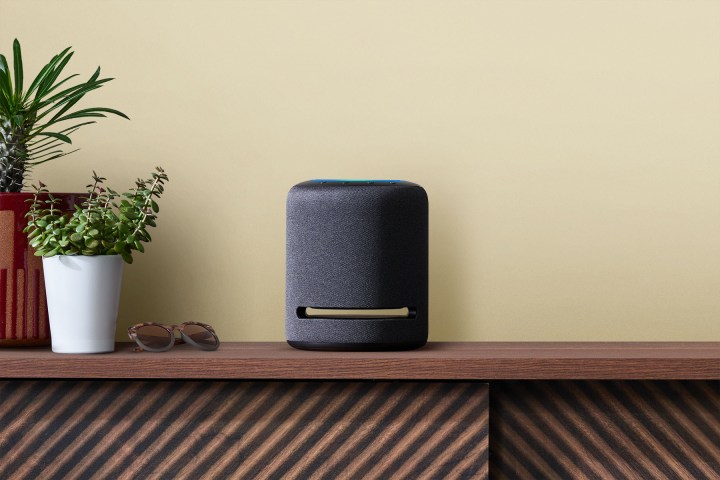With the right speaker, you can easily make Amazon’s Alexa voice assistant a part of your home theater setup, a great choice for streaming high-quality music playback! Here’s everything you need to get started, and how to link up Alexa the right way.
Step 1: Find an Alexa-compatible speaker

Your first step is to find a speaker that you connect to using Alexa. If you already have a Bluetooth speaker setup that you like, just double-check that it’s compatible with Alexa. Fortunately, this is an increasingly common feature to add to the latest TV soundbars and similar home theater speakers, so it shouldn’t be hard to find the right device for your entertainment system. When in doubt, you can visit Amazon’s list of speakers compatible with Echo devices to get started.
Note: If you have a larger home theater with multiple speakers involved, it may be a better idea to look for a receiver that’s compatible with Alexa or Echos instead. These Alexa receivers also exist, although they aren’t as well known as speakers, and they are an ideal solution for surround sound setups. Most of our other steps will remain the same with a compatible receiver.
Step 2: Choose a device that has Alexa built in

While many speakers have Alexa compatibility for connection to Amazon’s voice assistant, you also need a device that
What Echo device works best for you will depend on your plans, but the latest Echo 4th-gen is a great model, and the Echo Show comes with a touchscreen display for more bonus features. Again, if you already have an Echo or a device with Alexa in it, you don’t have to worry about this step. You can also choose to talk to
Step 3: Download the Alexa app and set up an account

If this is your first time using an Alexa device, you will need to take time to download the
We also suggest using Alexa’s services to connect to your favored music streaming services at this point. Alexa is compatible with Spotify, Pandora, Deezer, iHeartRadio, SiriusXM, and more. Since playing music over your entertainment system is one of the best ways to use
Note: Some devices may have you use a third-party app to set up the speaker and connect to Alexa (some Sony speakers, for example, may have you use the Music Center app). Generally, do what your speaker manual recommends.
Step 4: Pair the new speaker with Alexa

Check that your speaker is on and ready. Open your Alexa app, and select More on the bottom right menu. Then select Add a Device to begin. Choose the category of device, probably Speaker or Bluetooth Speaker, then the brand and model base on the speaker you have. At this point,
If your speaker supports Bluetooth but Alexa can’t seem to recognize it as a device, you may still pair with it by selecting Devices on the
Step 5: Give Alexa voice commands for the speaker

Now you can start giving Alexa commands to play music through your speaker. Commands like, “
Alternative: Put together an Echo speaker system

If you are heavily invested in Alexa or the Echo ecosystem already, an alternative approach would be setting up a thorough home theater speaker system using only Echo devices, which are naturally able to communicate with each other. Newer Echo models support Dolby Audio, and devices like the Echo Sub and the Echo Studio (with 3D audio) are specifically made for home theaters.
The big caveat with this approach (in addition to the extra cost) is that you really need an Amazon Fire TV device to help the Echos work organically together. You can find more casual Echo partnering options by selecting Devices in the Alexa app, choosing the Plus icon, and choosing Set Up Multi-Room Music.
Editors' Recommendations
- Best Bluetooth speaker deals: Save on Bose, Sonos, JBL, and more
- The best speakers for 2024: great hi-fi options for music and more
- Dolby Atmos FlexConnect could eliminate home theater soundbars and HDMI cables
- How we test speakers
- How we test TVs




